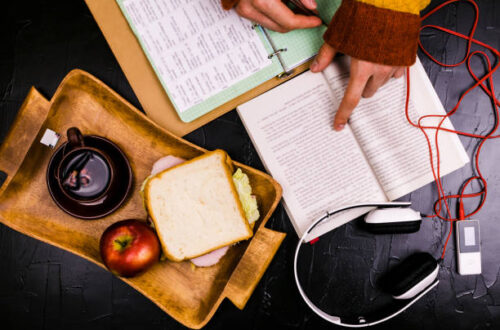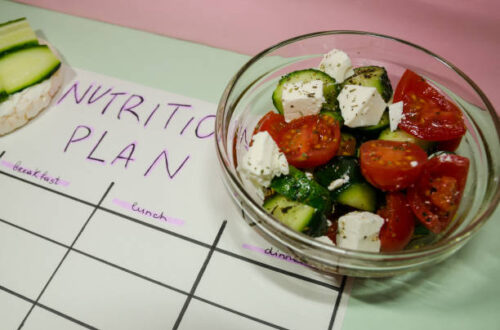As a female student, you’re juggling a lot. With late-night study sessions, part-time jobs, and a busy social life, finding time and money for healthy eating can seem impossible. It’s simple to grab a cheap meal at the campus food court or a bag of chips from the vending machine. But these choices can lead to weight gain and low energy. The pressure to look a certain way and having a tight budget can make a successful weight loss diet feel impossible.
But what if we told you it doesn’t have to be? You don’t need a personal chef or pricey organic foods. You also don’t need a strict diet that makes you feel hungry and unhappy. The secret to an effective Diet Plan for Weight Loss is to be smart, strategic, and consistent. Focusing on affordable, easy-to-find ingredients and simple meal ideas can help you eat sustainably. This approach not only supports your weight loss goals but also boosts your energy for student life.
This guide is your go-to roadmap for a simple, budget-friendly weight loss diet plan for female students. We’ll cover the main principles of successful weight loss. Then, we’ll share a flexible 7-day meal plan with affordable ingredients. Also, we’ll offer practical tips to help you stay on track, even on your busiest days.
The Core Principles of a Successful Diet Plan for Weight Loss
Contents
- 1 The Core Principles of a Successful Diet Plan for Weight Loss
- 2 The Ultimate 7-Day Diet Plan for Weight Loss (Approx. 1,600-1,800 Calories)
- 3 Your Budget-Friendly Grocery List for This Diet Plan for Weight Loss
- 4 Practical Tips for Success: Making the Plan Work for Your Life
- 5 Conclusion: Fueling Your Future, One Meal at a Time
- 6 FAQs About the Student Diet Plan
Before we dive into the meals, let’s understand the fundamental rules that will make this Diet Plan for Weight Loss a success. These aren’t complicated ideas; they are the key habits that will help you see real, lasting results without feeling like you’re on a diet.
1. Caloric Deficit: The Golden Rule
The single most important factor for weight loss is a caloric deficit. This means you need to consume fewer calories than your body burns each day. For most female students, a good starting point for a Diet Plan for Weight Loss is to aim for a daily intake of around 1,600 to 1,800 calories. This range is high enough to provide your body with the fuel it needs, but low enough to create the deficit required for sustainable weight loss. You don’t need to count every calorie. Just make smarter food choices. Pick foods that are lower in calories and higher in nutrients.
2. The Power of Protein and Fiber
If you want to feel full and satisfied while losing weight, you need to make protein and fiber the stars of your meals. These two nutrients work together to keep you from getting hungry too soon.
- Protein: It takes more energy for your body to digest protein, and it helps you feel full for longer. Adding lean protein to each meal—like eggs, lentils, or chicken—will help stop mid-afternoon hunger. This way, you won’t feel tempted to hit the vending machine.
- Fiber: Found in fruits, vegetables, and whole grains, fiber adds bulk to your food without adding many calories. It helps regulate your digestion and keeps your blood sugar levels stable, so you avoid the energy crashes that make you crave sugar.
By focusing on these two, you can feel satisfied on fewer calories, which is the ultimate secret to an effective Diet Plan for Weight Loss.
3. Smart Snacking: Your Secret Weapon Against Cravings
Snacking isn’t a bad thing, especially for a busy student. Smart snacking can prevent you from getting so hungry that you overeat at your next meal. The trick is to choose snacks that are high in protein and fiber. Instead of chips or cookies, opt for an apple with peanut butter, a handful of almonds, or a cup of Greek yogurt. These snacks will keep you full and focused without derailing your Diet Plan for Weight Loss.
4. Hydration is Non-Negotiable
This is a simple but powerful habit. Sometimes when you feel hungry, you’re actually just thirsty. Drinking plenty of water throughout the day keeps you hydrated, boosts your metabolism, and can help you feel fuller. Get in the habit of carrying a reusable water bottle with you everywhere you go and aim to drink at least 8 glasses a day.
The Ultimate 7-Day Diet Plan for Weight Loss (Approx. 1,600-1,800 Calories)
This flexible meal plan is your template for a week of healthy eating. It’s simple. It uses many of the same ingredients to save money. It also requires minimal cooking time, making it easy to fit into your busy student schedule.
Breakfast (Choose One Option Each Day)
Start your day with a quick, high-protein breakfast that will give you lasting energy.
- Option A: Greek Yogurt Parfait (300-350 calories): A cup of plain Greek yogurt, topped with a half-cup of frozen berries and a tablespoon of nuts. This is quick, delicious, and packed with protein.
- Option B: Oatmeal with Banana (300-350 calories): Cook a half-cup of rolled oats with water or low-fat milk. Top with half a sliced banana and a sprinkle of cinnamon.
- Option C: Hard-Boiled Eggs (200-250 calories): Two hard-boiled eggs with a piece of whole-grain toast. Hard-boil a batch of eggs on Sunday to have them ready to go.
Lunch (Meal Prep on Sunday for the Week)
Lunch is often the most challenging meal for students. By prepping a large batch of one of these meals, you’ll have a healthy option ready to go, saving you money and time.
- Option A: Chickpea Salad (400-450 calories): Mash a can of chickpeas with a tablespoon of Greek yogurt and some chopped celery. Serve in a whole-wheat wrap with some spinach.
- Option B: Simple Chicken and Veggie Bowl (450-500 calories): Cook a large batch of chicken breasts or thighs. For lunch, serve a 4oz portion with a cup of steamed frozen broccoli and a cup of cooked brown rice.
- Option C: Lentil and Veggie Soup (400-450 calories): Make a big pot of lentil soup with carrots, celery, and onions. This is incredibly cheap, filling, and tastes even better as leftovers.
Dinner (Mix and Match)
Dinner should be a satisfying meal that’s easy to make. These options are comforting and healthy.
- Option A: Simple Pasta with Sauce (450-500 calories): Cook a serving of whole-wheat pasta. Use a can of crushed tomatoes to make a simple sauce, and add in some frozen vegetables or a handful of spinach.
- Option B: Sheet Pan Chicken and Veggies (500-550 calories): Mix chicken thighs with diced potatoes, carrots, and broccoli. Drizzle with olive oil and spices. Roast everything on a single pan for an easy meal with minimal cleanup.
- Option C: Tuna Melts (400-450 calories): Mix a can of tuna (in water) with a tablespoon of Greek yogurt instead of mayo. Serve on two slices of whole-grain bread with a slice of cheese and a small salad on the side.
Snacks (Choose 1-2 a Day)
- Apple or Banana (100-150 calories): A classic, simple, and healthy snack.
- Handful of Almonds or Walnuts (150-200 calories): Great for a quick boost of energy and healthy fats.
- Greek Yogurt (150-200 calories): A single-serving container is a fantastic source of protein.
- Carrot Sticks with Hummus (100-150 calories): A satisfying and healthy crunchy snack.
Your Budget-Friendly Grocery List for This Diet Plan for Weight Loss
The secret to this Diet Plan for Weight Loss is a strategic and affordable grocery list. By focusing on these essential ingredients, you can build all the meals in this plan without overspending.
Protein Sources (The Foundation of Your Meals)
- Eggs: The most versatile and affordable protein source.
- Chicken Thighs/Breasts: Buy in bulk when on sale.
- Canned Tuna (in water): Perfect for a quick, high-protein meal.
- Dried Lentils/Canned Beans: Extremely cheap and a great source of protein and fiber.
- Greek Yogurt (Plain): A great source of protein for breakfast and snacks.
Grains and Carbohydrates (Your Energy Fuel)
- Rolled Oats: Perfect for breakfast and can be bought in large containers.
- Brown Rice/Quinoa: Great for meal prepping.
- Whole-Grain Bread/Pasta: Provides more fiber and keeps you full longer.
- Potatoes: Cheap and filling, a great carb source for your sheet pan meals.
Fruits and Vegetables (For Fiber and Volume)
- Frozen Vegetables: Frozen broccoli, spinach, and mixed veggies are cheap, last forever, and are just as nutritious as fresh.
- Frozen Berries: Great for oatmeal and smoothies.
- Onions, Garlic, Carrots, Celery: The foundation of many recipes and very inexpensive.
- Apples, Bananas: Cheap, portable, and healthy snacks.
Healthy Fats and Other Essentials
- Olive Oil: A little goes a long way.
- Nuts (Almonds, Walnuts): A great snack. Buy in bulk for savings.
- Peanut Butter: A great source of healthy fats and protein.
- Spices: Cumin, chili powder, paprika, salt, and pepper. A one-time purchase that will add flavor to countless meals.
- Salsa: A low-calorie way to add flavor to burrito bowls and chicken.
Practical Tips for Success: Making the Plan Work for Your Life
Even the best Diet Plan for Weight Loss can fail without the right habits. Here are some extra tips to help you stay on track and make this plan a success.
1. Master the Art of Meal Prep Sunday
Dedicate a couple of hours on a Sunday to do your food prep for the week. This is the single most effective way to stay on track. This might include:
- Cooking Grains: Cook a large batch of brown rice or quinoa for use in different meals.
- Cooking Protein: Cook a large batch of chicken or hard-boil a dozen eggs.
- Chopping Vegetables: Cut up onions, carrots, and other veggies so they are ready to throw into a pan for a stir-fry or soup.
This small investment of time on Sunday will save you a ton of time and stress during the busy school week.
2. Dealing with Cravings and Social Outings
As a student, you’ll be faced with pizza nights, coffee shop study sessions, and late-night cravings.
- Cravings: If you feel a craving coming on, first drink a large glass of water. Wait 15 minutes. If you’re still craving something, have a small, healthy snack.
- Social Outings: You don’t have to avoid your friends. If you know you’re going out for dinner, eat a small, healthy meal beforehand to prevent overeating. At the restaurant, choose a healthier option, like a grilled chicken salad with dressing on the side.
3. The Importance of Sleep and Movement
Your Diet Plan for Weight Loss is only part of the equation. Both lack of sleep and high stress levels can increase cravings for unhealthy food and lead to weight gain. As a student, this is a real challenge, but making an effort to get 7-9 hours of sleep and finding time for some physical activity can make a huge difference. You don’t need a gym membership; a simple walk around campus or a yoga video on YouTube is enough to get started.
4. Don’t Be Too Hard on Yourself
This is perhaps the most important tip. You’re human, and you’re a student. Life happens. If you have a day where you eat off-plan, don’t beat yourself up about it. One day of eating off-plan will not ruin your progress. The key is to get back on track with your very next meal. Consistency is more important than perfection. A healthy eating lifestyle is about making good choices most of the time, not all of the time.
Conclusion: Fueling Your Future, One Meal at a Time
Being a female student can be tough, and the pressure to manage your time, money, and health is real. But as this guide shows, you can successfully implement a healthy and affordable Diet Plan for Weight Loss without feeling deprived. By embracing a few core principles—prioritizing protein and fiber, focusing on volume eating, and mastering meal prep—you can take control of your diet and your finances.
Eating well is not just about your physical health; it’s about your mental health, energy levels, and academic performance. A well-fed brain is a focused brain. With this plan and these tips, you can fuel your body for success, reduce your stress, and make your student life a little bit easier and a lot healthier. The journey to a leaner, happier you starts with your next grocery trip.
FAQs About the Student Diet Plan
Q1: Is this plan healthy and safe for long-term weight loss?
A: Yes, this plan is designed to be a healthy and safe way to lose weight. It focuses on whole foods, lean protein, and plenty of fruits and vegetables, which are the cornerstones of a healthy diet. The caloric deficit is moderate, which is a sustainable and healthy way to lose weight over time.
Q2: How much weight can I expect to lose on this plan?
A: Weight loss varies from person to person, but a healthy and sustainable rate is typically 1-2 pounds per week. Consistency is key, so sticking to the plan and incorporating some physical activity will give you the best results.
Q3: What if I don’t like some of the foods on the plan?
A: This plan is a template, not a strict rulebook. Feel free to substitute foods you don’t like with others that have a similar nutritional profile. For example, if you don’t like chicken, you can use fish or tofu. If you hate broccoli, swap it for cauliflower or green beans. The key is to keep the principles of high protein, high fiber, and low calories in mind.
Q4: Can I drink alcohol on this diet plan?
A: Alcohol is full of empty calories and can hinder your weight loss efforts. It’s best to limit alcohol consumption as much as possible. If you do choose to drink, opt for low-calorie options like a shot of vodka with soda water instead of beer or sugary mixed drinks.
Q5: How can I manage hunger and cravings?
A: This plan is designed to minimize hunger and cravings by keeping you full with protein and fiber. However, if you do feel hungry, drink a large glass of water. If you are still hungry, grab a healthy, low-calorie snack like an apple or a handful of vegetables. For cravings, try to have a small piece of dark chocolate or a handful of berries instead of a whole bag of chips.





